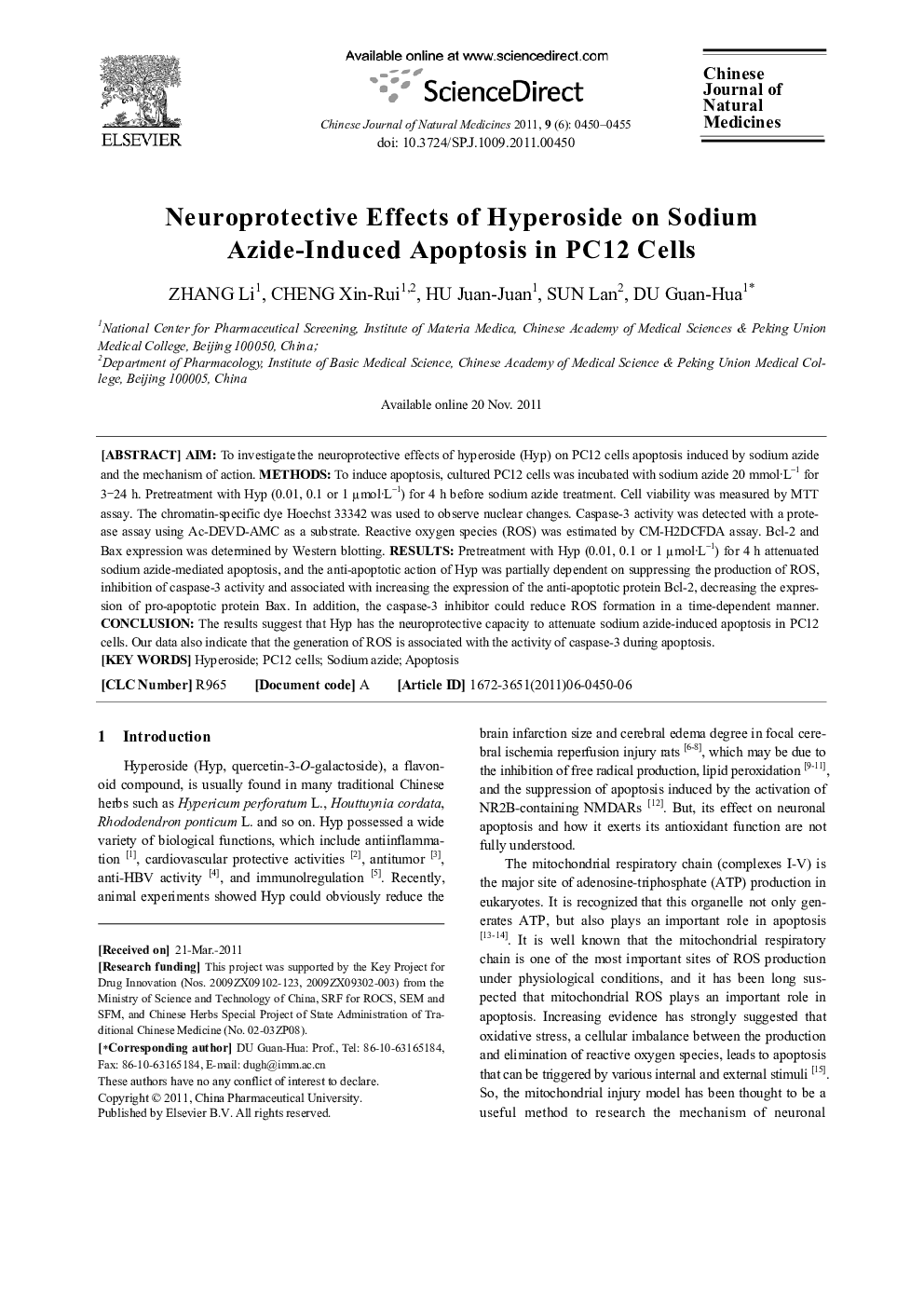| Article ID | Journal | Published Year | Pages | File Type |
|---|---|---|---|---|
| 2526922 | Chinese Journal of Natural Medicines | 2011 | 6 Pages |
AimTo investigate the neuroprotective effects of hyperoside (Hyp) on PC12 cells apoptosis induced by sodium azide and the mechanism of action.MethodsTo induce apoptosis, cultured PC12 cells was incubated with sodium azide 20 mmol·L−1 for 3-24 h. Pretreatment with Hyp (0.01, 0.1 or 1 μmol·L−1) for 4 h before sodium azide treatment. Cell viability was measured by MTT assay. The chromatin-specific dye Hoechst 33342 was used to observe nuclear changes. Caspase-3 activity was detected with a protease assay using Ac-DEVD-AMC as a substrate. Reactive oxygen species (ROS) was estimated by CM-H2DCFDA assay. Bcl-2 and Bax expression was determined by Western blotting.ResultsPretreatment with Hyp (0.01, 0.1 or 1 μmol·L−1) for 4 h attenuated sodium azide-mediated apoptosis, and the anti-apoptotic action of Hyp was partially dependent on suppressing the production of ROS, inhibition of caspase-3 activity and associated with increasing the expression of the anti-apoptotic protein Bcl-2, decreasing the expression of pro-apoptotic protein Bax. In addition, the caspase-3 inhibitor could reduce ROS formation in a time-dependent manner.ConclusionThe results suggest that Hyp has the neuroprotective capacity to attenuate sodium azide-induced apoptosis in PC12 cells. Our data also indicate that the generation of ROS is associated with the activity of caspase-3 during apoptosis.
